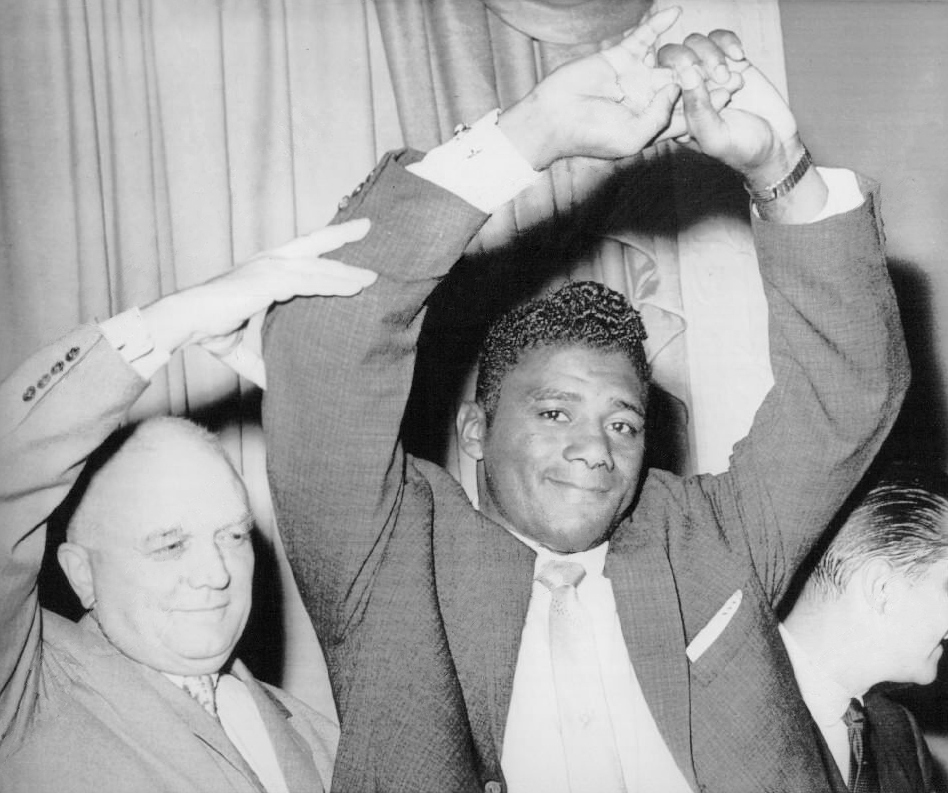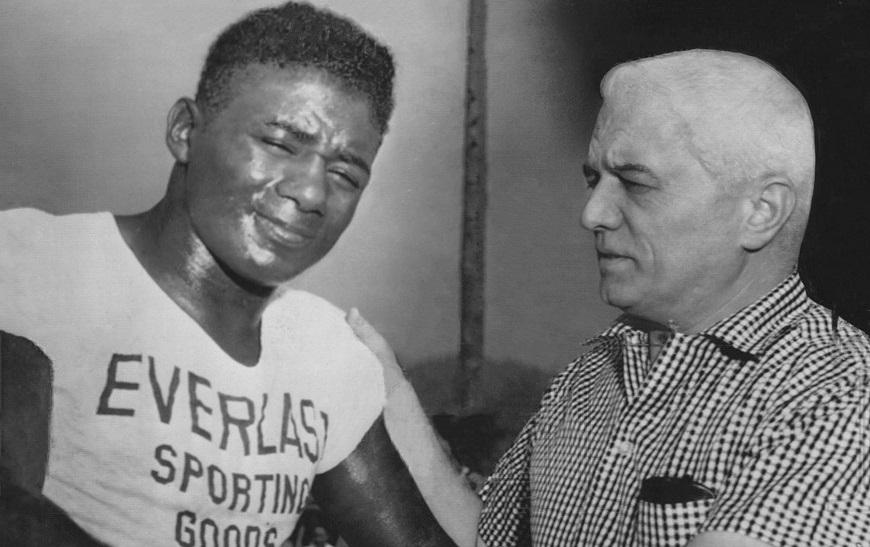Floyd Patterson was a true boxing legend. His unique style in the ring was a sight to see. From his amazing head movements to his powerful left hook, in this blog post, we’re going to dive into what made him so special.
What was Floyd Patterson’s fighting style?
Floyd Patterson mastered the “peek-a-boo” style, characterized by elusive head movement, high-held hands, and a crouching stance for powerful counters. Known for his fast combinations, lethal left hook, and effective body punches, Patterson’s style combined defense with unpredictable offense, making him a formidable and entertaining fighter.
Famous for his unique fighting technique, Floyd Patterson had training from the late great instructor Cus D’Amato, who also had an impact on Mike Tyson. This style, sometimes known as the “peek-a-boo”, was designed to make a boxer appear elusive, especially by moving the head continuously even when throwing punches.
Patterson’s primary defensive mechanism was his head movement. This continuous motion not only made it challenging for opponents to establish a jab against him but also set him up for effective counterattacks. His fighting style made it difficult for his opponents to regulate distance, which was essential to victory.
This elusiveness instilled unease in his opponents, who were aware that Patterson was adept at countering off his slips and dips.
Patterson’s approach to slipping punches involved taking his whole body in the direction of the slip, often resulting in a leaning crouch-like stance. From this position, he could spring up, transferring momentum into his punches, making them difficult to track.
Patterson’s infamous left hook was a cornerstone of his offense. He often set it up with a dip or slip to the left, misleading opponents into perceiving it as a defensive move. This hook, combined with his remarkable speed, was often unseen until it was too late.
Aside from his left hook, Patterson also had an effective right hand lead. His opponents’ preoccupation with avoiding his left hook often led them directly into his right hand. He was also proficient in body punching, something D’Amato had taught him. By targeting the body, he would create openings for headshots.
In line with the peek-a-boo style, Patterson kept his hands high, requiring minimal adjustments for defense. This was particularly beneficial in close-range combat, where reaction time was limited.
Patterson’s style was not only about defense and elusive movement. He was also incredibly fast, arguably possessing faster hands than even Muhammad Ali. His blistering hand speed allowed him to throw rapid combinations, overwhelming opponents who couldn’t keep up with his rhythm.
In addition, Patterson was an expert at infighting, timing strikes to hit opponents before they could counter. He was adept at circling the ring, skillfully moving in and out of range to bait opponents into his attacks.
He often closed the distance by slipping outside while stepping inside, a position that provided maximum safety and concealed much of his body from the opponent’s view.
Patterson was a dangerous and unpredictable opponent because of his ability to switch between aggressive and defensive play with ease. He could switch from circling and probing to suddenly charging forward, applying intense pressure.
Essentially, Floyd Patterson was unstoppable in the ring because of his sneaky head movements, lightning-fast hand speed, peek-a-boo defense, and deadly hook and counter combos.
His approach, while risky, was not only effective but also made him an exciting and entertaining fighter, living up to D’Amato’s philosophy of boxing.
Was Floyd Patterson a good boxer?

Floyd Patterson was a terrific boxer. He became the youngest heavyweight champion at 21, won an Olympic gold medal, and was the first heavyweight to regain the title after losing it. His record of 55 wins and induction into the Hall of Fame further validate his skill and success in boxing.
Few boxing figures are as fascinating as Floyd Patterson. His story, from a troubled youth to a heavyweight boxing legend, is a testament to the transformative power of the sport. Patterson’s career in the ring was marked by both incredible successes and devastating defeats.
Patterson’s rise to the top of the boxing world was nothing short of extraordinary. At the age of 21, he had already made history by becoming the youngest heavyweight champion, a title he retained until Mike Tyson’s ascent. His victory in the 1952 Olympics and his ability to become the first heavyweight to regain the title after losing it speak volumes about his tenacity and skill.
His reign from 1956 to 1962 was not just about holding the heavyweight title; it was about dominating the boxing scene with what some would call “fistic flurries of fury.”
His achievements in the ring were recognized when he was named Fighter of the Year in 1956 and 1960. Patterson’s status as one of the greatest in the sport was further cemented in 1991 when he was inducted into the International Boxing Hall of Fame.
Yet, for all his brilliance, Patterson’s career was also marked by vulnerabilities. His mentor and trainer, Cus D’Amato, noted early in his career that Patterson lacked the killer instinct, being “too tame, too nice to his opponents.”
This perceived softness, however, didn’t detract from his ability to be a formidable force well into the late 1960s, showcasing his skill and power against the likes of George Chuvalo and Jerry Quarry.
His inability to take a heavy punch was evident in his bouts with Ingemar Johansson and Sonny Liston, yet he never lost his contender status and remained a threat in the heavyweight division until nearly the end of his career.
His retirement in 1972, with a record of 55 wins, 8 losses, and one draw, marked the end of an era. But his legacy endures, not just as a boxer who captivated audiences with his skill and resilience but as a man who found redemption and glory through the sport he loved.

